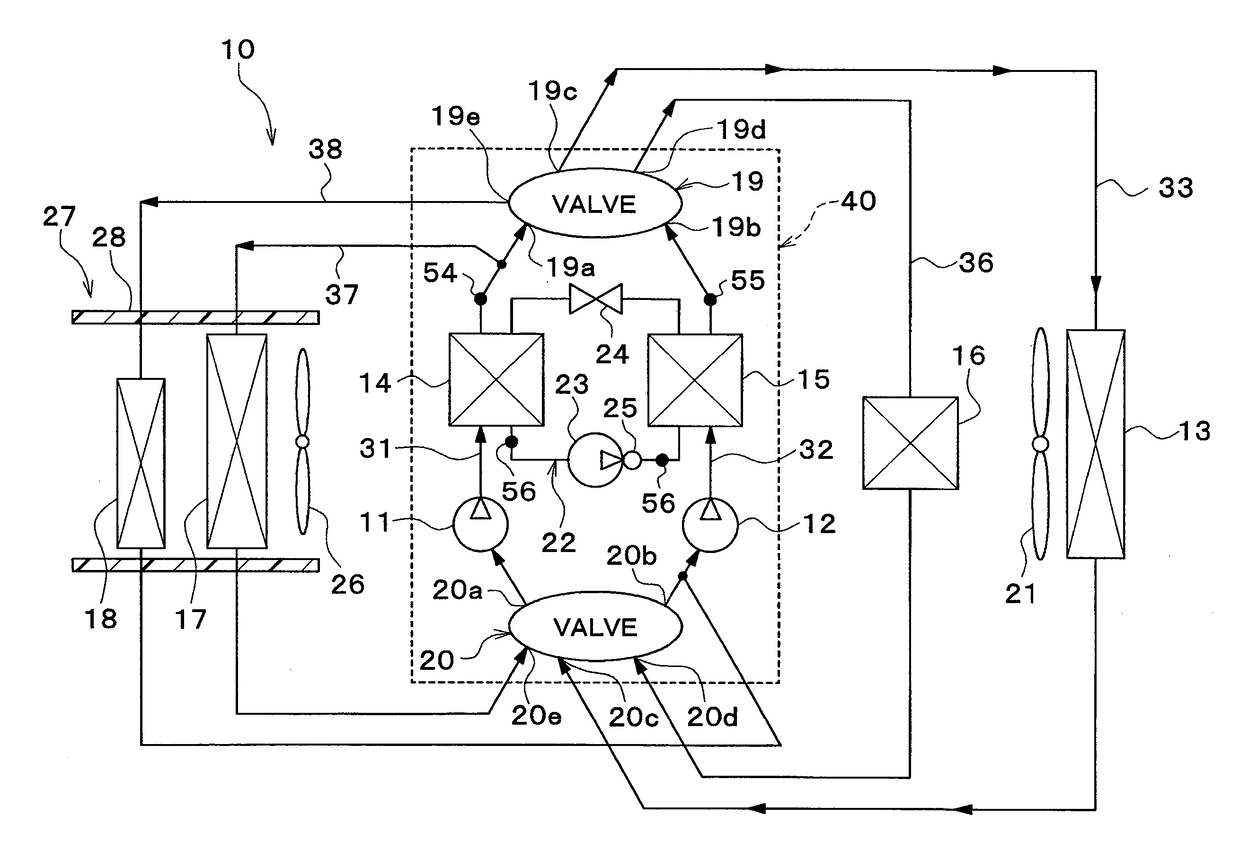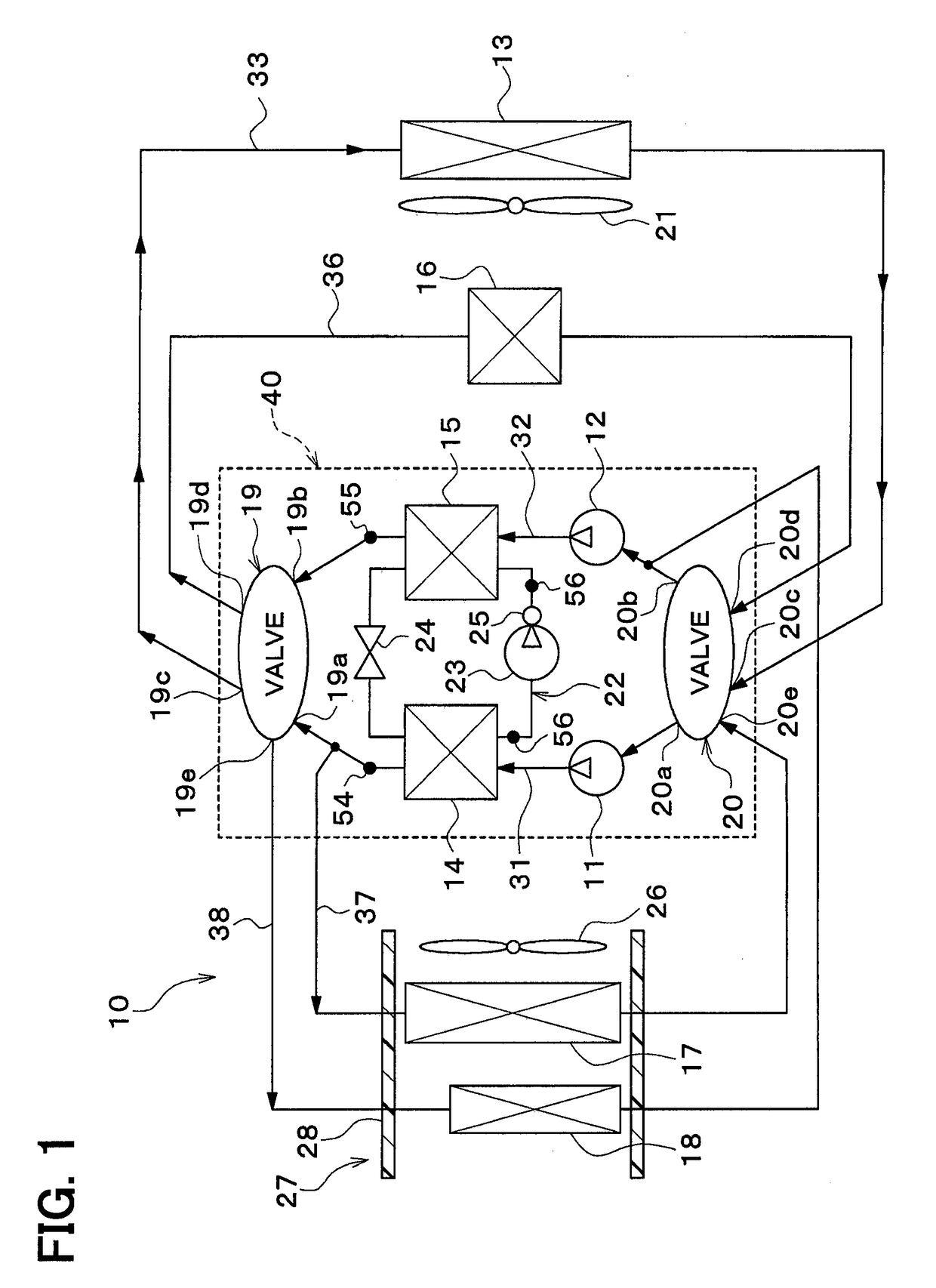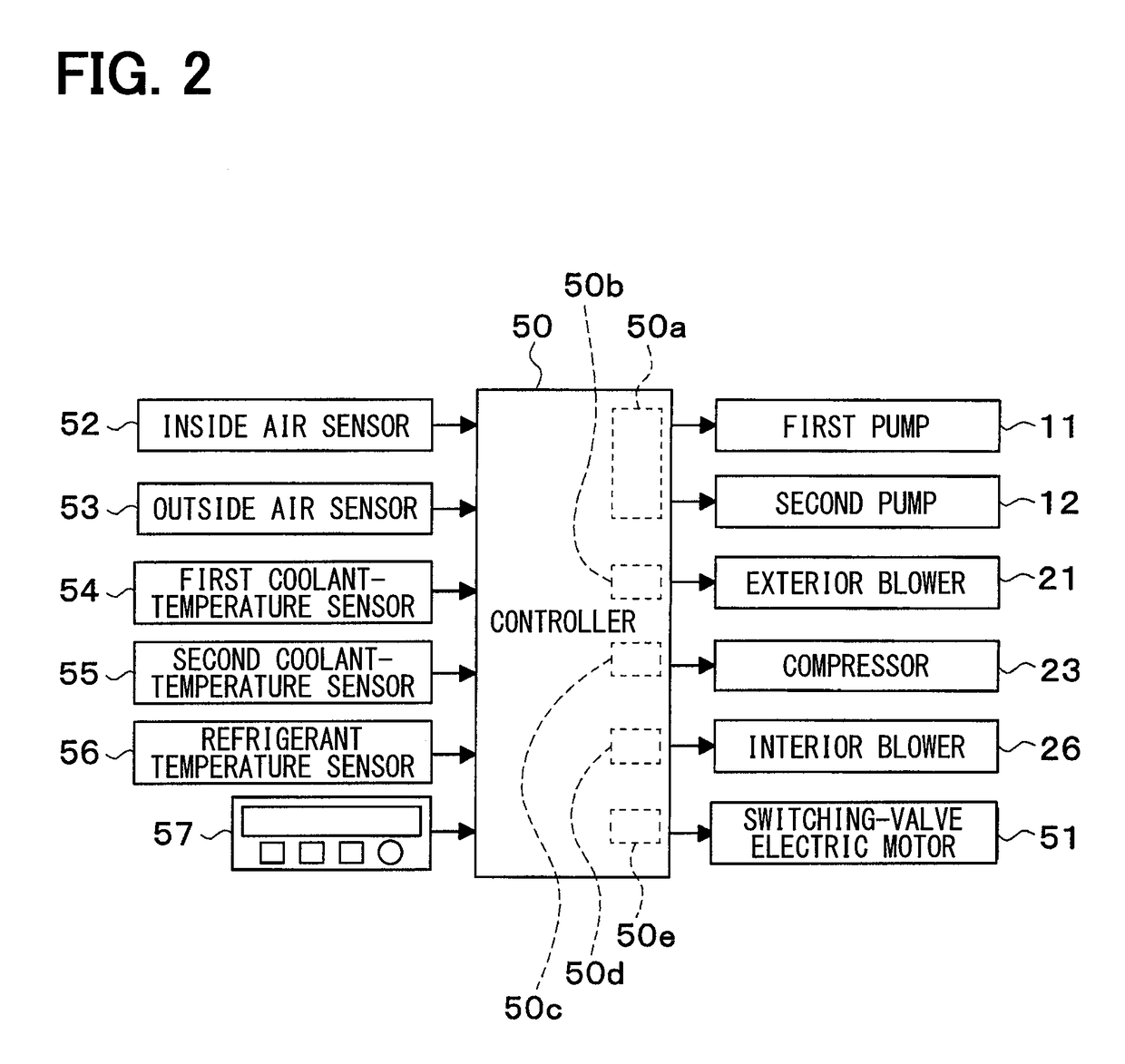Thermal management system for vehicle
a technology for managing systems and vehicles, applied in vehicle sub-unit features, electric propulsion mountings, lighting and heating apparatuses, etc., can solve the problems of difficult to reduce the temperature and pressure of refrigerant, increase the power consumption, and high starting torque, so as to prevent the temperature from being high, increase the temperature, and reduce the pressure of the high-pressure side heat exchanger
- Summary
- Abstract
- Description
- Claims
- Application Information
AI Technical Summary
Benefits of technology
Problems solved by technology
Method used
Image
Examples
first embodiment
[0023]A vehicle thermal management system 10 shown in FIG. 1 is used to adjust various devices mounted on a vehicle or an interior of the vehicle to appropriate temperatures. In this embodiment, the vehicle thermal management system 10 is applied to a hybrid vehicle that can obtain the driving force for traveling from both an engine (internal combustion engine) and a traveling electric motor.
[0024]The hybrid vehicle of this embodiment is configured as a plug-in hybrid vehicle that can charge the battery (vehicle-mounted battery) mounted on the vehicle, with power supplied from an external power source (commercial power source) during stopping of the vehicle. For example, a lithium ion battery can be used as the battery.
[0025]The driving force output from the engine is used not only to cause the vehicle to travel, but also to operate a power generator. The power generated by the power generator and the power supplied from an external power source can be stored in the battery. Such po...
second embodiment
[0150]In this embodiment, as shown in FIG. 7, an evaporator 60 is provided in place of the coolant cooler 14 and the cooler core 17 of the above-mentioned first embodiment.
[0151]The evaporator 60 is an air cooling heat exchanger (air-refrigerant heat exchanger) that cools the ventilation air into the vehicle interior by exchanging heat between the low-pressure side refrigerant in the refrigeration cycle 22 and the ventilation air into the vehicle interior.
[0152]The evaporator 60 evaporates a low-pressure refrigerant by exchanging heat between the low-pressure refrigerant decompressed and expanded by the expansion valve 24 and the ventilation air into the vehicle interior. The gas-phase refrigerant evaporated at the evaporator 60 is drawn into and compressed by the compressor 23.
[0153]Also in this embodiment, an air-cooling operation (radiator heat dissipation mode) can be performed in the same manner as in the first embodiment.
[0154]In the radiator heat dissipation mode, the control...
PUM
 Login to View More
Login to View More Abstract
Description
Claims
Application Information
 Login to View More
Login to View More - R&D
- Intellectual Property
- Life Sciences
- Materials
- Tech Scout
- Unparalleled Data Quality
- Higher Quality Content
- 60% Fewer Hallucinations
Browse by: Latest US Patents, China's latest patents, Technical Efficacy Thesaurus, Application Domain, Technology Topic, Popular Technical Reports.
© 2025 PatSnap. All rights reserved.Legal|Privacy policy|Modern Slavery Act Transparency Statement|Sitemap|About US| Contact US: help@patsnap.com



